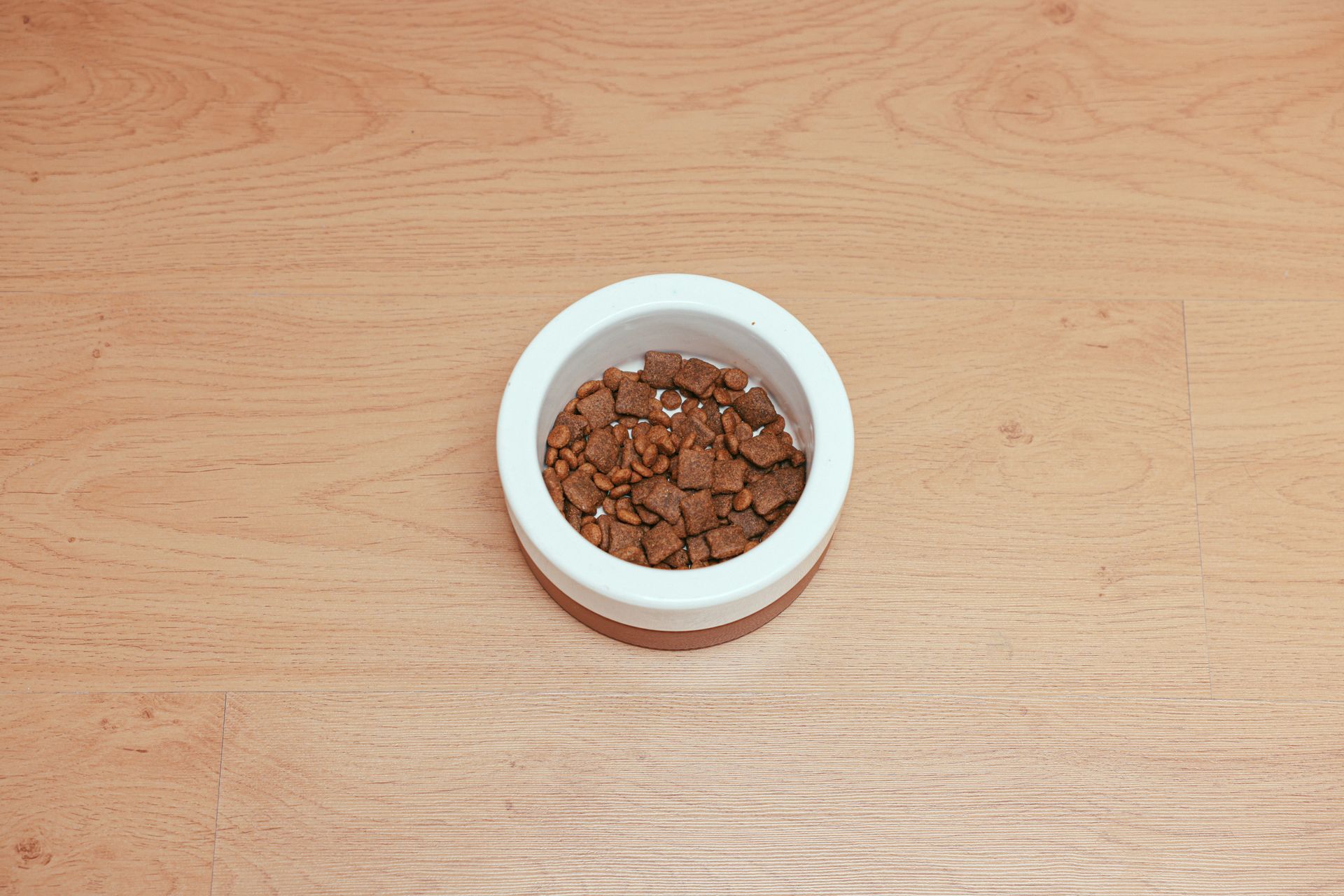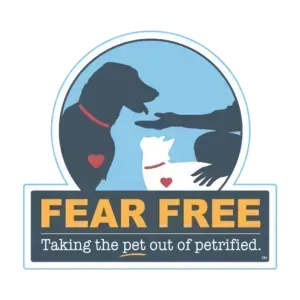Running with Your Dog

Running with Your Dog
Many runners spend a lot of time out on the trails, and many have dogs. This leads them to wonder about running with their dog in order to spend extra time with their canine friend. Running with a dog can provide many benefits, some as simple as the companionship along the way. Running is obviously beneficial exercise for us, but it is also beneficial to our dogs. This benefit comes with some risks, so there are many things for us to consider before taking our best friend for a run.
AGE:
It is not a good idea to run with a puppy. Did you know that many marathon races have a minimum age requirement of 18 years old for people? The longest competitive race distance for high school track competitions is the 5k (3.1 miles) This may seem odd, but there is an increased risk of injury to younger runners. The impact of running is high, which can lead to injury. In the young, growing population; this can lead to excessive joint pressures. This is all the more important to consider when active growth plates are involved. This same principle applies to our dogs. As they grow, the growth plates are very sensitive to damage, which can lead to abnormal growth patterns. Premature closure of part or all of the growth plate, can lead to bowed legs. These bowed legs often lead to further orthopedic problems as time goes on. For these reasons, we recommend waiting until a small dog is at least 12 months old. Larger dogs continue to grow, so should be eased into running at a higher age. Giant breed dogs, who are probably not the best running candidates, continue to grow until 24 months. During these younger ages, it is very important to teach her how to be obedient when on a leash (teach her leash manners). You will want your dog to be obedient and easy to control when you decide to begin your canine running plan.
Just like it is not a good idea to run with a dog that is too young, it is advisable to retire your dog from running once he or she is 7 years old. Once a dog hits this magical age, he or she is considered a senior pet. Many larger breeds will start to experience osteoarthritis as they age. This condition worsens over time. It is true that some exercise is beneficial for arthritis, but too much running can be detrimental. Avid runners log enough miles that taking their older dog a long my overwhelm their dog's heart.
TAKE IT SLOW
The next thing to consider can also be adapted form human running circles. That is the rule of the "toos." This rule of "toos" states that doing TOO much, TOO Fast and going TOO far will lead to an increase in the likelihood of injury. Many runners need to start out with the run/ walk method. This is good for our dogs as well. Simply taking a dog and going for a 10 mile run is TOO much for them to handle. Dogs do tend to get better exercise on a routine basis than we do, so they may be able to start out at a half of a mile, up to about a mile in distance. Taking it slow, allows their body to slowly adapt to deal with the increased forces and demands of running. It is not a good idea to start with your dog on your weekend long run. Most runners who are training, will perform their long runs over the weekend. Perhaps, you could get your long run in and then return home to get your dog. He or she can then go with you for a 10 minute cool down period. Another god idea is to simply incorporate some running into your pets daily walk. You may even begin with on or two blocks at a time.
Most runners tend to follow (or at least have heard of) the 10% rule. This rule leads you to only increase weekly mileage by 10% per week. This is another a good rule of thumb for our canine athletes out there. Again, their bodies need some time to adapt to the increase in activity. It is best to run with your dog 3 or 4 days a week, as consistency is the key to increasing the exercise levels and the development of all of the support structures within the body. The cardiovascular system will need to time to adapt to the increased demand for blood. The respiratory system needs time to learn to capture more oxygen in order for the heart to move that oxygenated blood around the body.
Your dog does not have to worry about buying running shoes every 300 miles, but he does have to worry about the effects of his minimalist running style. The pads of the feet are the main surface that contacts the ground directly when your dog runs. This contact causes friction and the potential for small abrasions. This is yet another good reason to start out slow to allow your god's body to adapt to the rigors of running.
SAFETY CONCERNS
Do not run with dogs on blacktop or pavement in the summertime. Their paw pads are very delicate and can easily get burned on the hot surfaces. There are some dog boots and shoes that are commercially available to help limit the risk of burnt and scalded pads. It is also a good idea to avoid trails that have small, potentially sharp, gravel. This gravel may cut the pads, but is irritation at the very least when landed upon by your dog's sensitive pads.
Another thing to consider is that of safety. Dogs should always be kept on a leash. This will prevent him from running off, possibly into the road. It also keeps other runners safe. Other runners may not be comfortable with a loose dog running around. It is a good idea to be courteous to your fellow runners. There are several leashed available that are an expandable leash, which is contained on a belt to keep your hand free. The expandable, bungee-like, rope allows your dog some freedom without pulling you over if he or she decides to suddenly pick up the pace. Having your dog on a leash also helps you to guide him/ her where to run on the trail. This is most beneficial if there is broken glass or other debris on the trail or path. The final reason is that in most areas there are leash laws. Following the law for local areas is always the best advice.
In addition to keeping your dog on a leash, it is a courtesy to clean up after him if he happens to go to the bathroom along the route. It is very easy to carry a baggie along for this purpose. Many trails have garbage cans at the beginning and end. Some even have them along the route.
Do not run in high traffic areas. This is a good tip for all runners, as the more traffic there is, the higher the risk of getting injured by a car or other debris being thrown up from a moving vehicle. Dogs may experience a lot of anxiety by running with a lot of traffic around. They are also more likely to get injured if they tend to run on the side of traffic.
What about hydration? Unlike you, your dog is not able to hydrate over the days preceding a race or a run. This means that he or she may get dehydrated faster than you may think. There are various options for you to provide your pet with a drink on the run. There are some water bottles for dogs that are similar to the ones that we carry, yet modified for your dog. These often have a ball valve in the end, similar to the water bottles that are often seen in gerbil and rabbit cages. By licking the ball valve, the ball is elevated. This allows some water to flow to the end, where your dog is licking. Short runs on cool days do not require water. Runs that are longer in duration than 45 minutes require water. These longer runs also require extra fuel for the body. There are some treats that are higher in protein and contain much needed fat for energy.
If you are considering running with your dog, be advised that you need to watch for signs of overexertion. The first sign may be that your dog simply begins to lag behind. A fit dog that is in no distress will be panting steadily, with his tongue mostly inside his mouth. Excessively heavy panting often with his tongue hanging out of his mouth. He may also have the corners of his mouth drawn up tight. If you notice any of these signs, slow down or begin to walk. Even 30 seconds to a minute of walking can help to cool you and your dog down a little bit. This allows the heart rate to begin to slow as well.
BREED CONSIDERATIONS
One additional point to consider is the breed of your dog. Many brachiocephalic dogs (those with the shorter noses) are not good candidates for running. These breeds, such as the Pug and Bulldog, are very susceptible to heatstroke/ overheating. They also can easily get oxygen deprived during any strenuous exercise. Any dog that has ben diagnosed with a heart murmur should not be taken along for a run. The heart murmur indicates abnormal bloodflow, often the result of an underlying heart condition. Some of our smaller breeds are also not the best of candidates. For example, Miniature Dachshunds are great dogs, but their short legs make running excessively difficult on them as they try to keep up.
It is important to point out that there are exceptions to every rule. These are simply the most reasonable rules and guidelines to follow when running with your dog.



CONTACT US
VETERINARY WELLNESS PARTNERS
LOCATIONS
COPYRIGHT © 2023 VETERINARY WELLNESS PARTNERS, INC. ALL RIGHTS RESERVED. BUILT BY BIRDEYE







